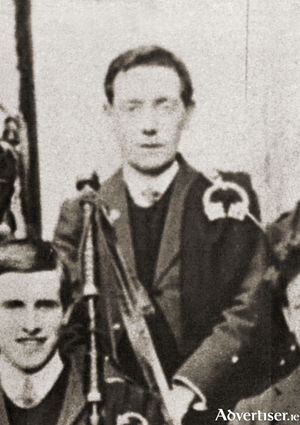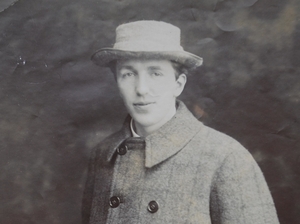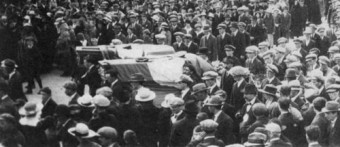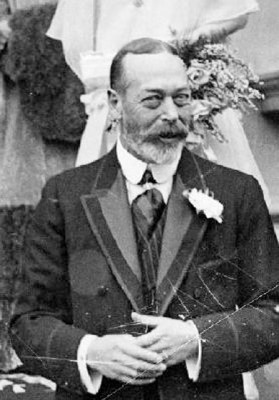Search Results for 'Irish Volunteers'
6 results found.
John Hosty, 1916 veteran

For John Hosty from Shantalla, the ‘physical force’ movement originated some time before 1910 with the publication of The United Irishman, a newspaper which kept a lot of young people from following ‘the constitutional movement’. When the 1913 Oireachtas was held in Galway, Seán McDermott used the occasion to swear in a number of young Galwegians to the IRB, and from then on they did all they could against the Irish Party, including distributing anti-enlisting literature at all hours of the night.
The enigma of Bulmer Hobson

ONE OF the more positive aspects of the wave of new books being published on the 1912-1923 period in Irish history is that it will fully explore the events leading up to, during, and after the 1916 Rising. Not only this, but for the first time, the lives of many enigmatic men and women who a played vital - and often dangerous - part in the fight for Irish Independence, but who have been airbrushed out of history, will be recorded in full.
An Irish Republic: The first blow is struck

One hundred years ago, a series of dramatic events caused turmoil in Ireland, and made rebellion practically inevitable.
Public lecture on the Irish Volunteers
Paramilitarism was introduced to Ireland when Edward Carson and James Craig formed the UVF in 1912. This act would inspire Irish nationalists to create a similar force year later.
Galway 1910 - 1923, the changing years

Early in 1916, Pádraic Pearse visited Athenry to discuss plans for the Rising. He wanted the Volunteers to hold the county at the River Suck at Ballinasloe, to capture Galway city, and then, if possible, to march on Dublin. There were several variations of this strategy, but whichever plan was finally agreed, its success depended on the Volunteers receiving modern weaponry. Up to then the men had been rehearsing with shotguns, and sticks. Pearse assured them that small arms, including assault rifles and machine guns, were on their way. They would arrive in Gort, and be distributed from there.
We can be proud of our military heritage

On June 12 1922 a very special ceremony took place at Windsor Castle, near London. Following the establishment of the Irish Free State the previous December, five Irish regiments, including the Connaught Rangers, the Royal Irish, the Leinsters, the Munsters, and the Dublin Fusiliers, which had served the British army with exceptional valour at times, were disbanded. It was a day of special significance for both the participants and onlookers. It was reported in the London Times.

